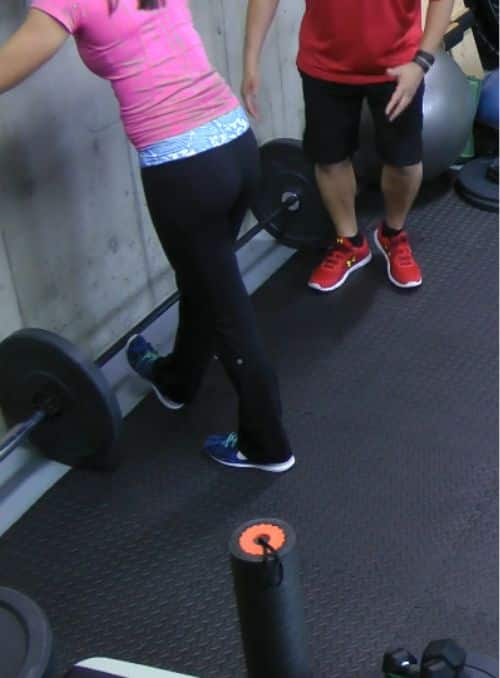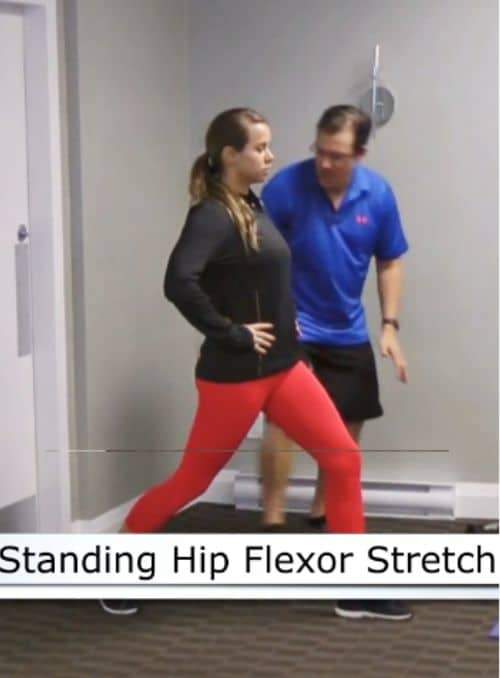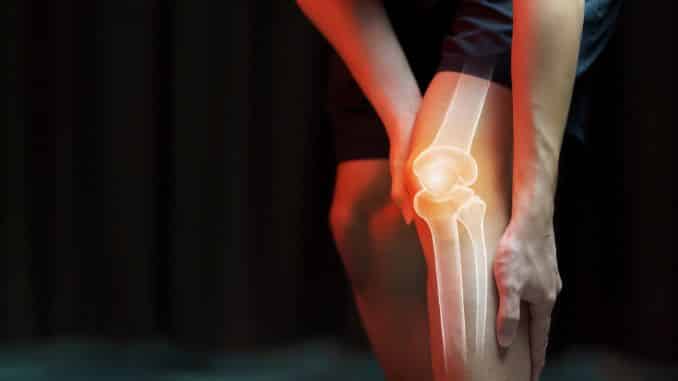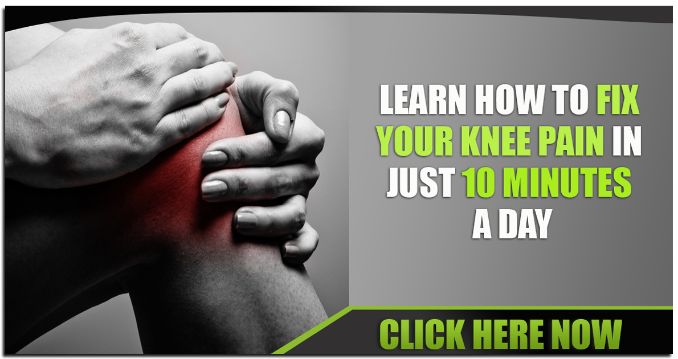At some point, nearly everyone experiences knee pain [1] — whether from exercise, sports, or everyday movement — and finding the best stretches for knee pain can help relieve it.
It can come from daily activities like walking, running, or sports, or from injury and overuse.
Whether it’s a sore knee after exercise, tight muscles pulling on the knee joint, or chronic discomfort, the right exercises can make a big difference.
Working with a physical therapist is often the safest choice, but most people can benefit from simple stretches and strengthening moves at home.
These stretches and strengthening exercises help support the joints, reduce knee discomfort, and keep your knees healthy and strong.
Note: Not all exercises are suitable for every individual. If you have an acute injury, severe swelling, or recent surgery, consult your healthcare provider before starting these movements.
1. Wall Calf Stretch

- Start by bringing one foot against the wall and then bend through the ankle.
- Straighten your other leg and put your hands up on the wall.
- Lean forward to get more stretch in the calf muscle.
- After that, Start with one set of 2 reps, alternating back and forth on each side.
- Perform this exercise with a good hold of 20 seconds. The intensity is light.
- This is a stretch exercise and works on the elongation of the calf muscle.
- Often, the tension in the whole lower body leads to muscle shortening that causes the pulling on the knee, resulting in knee pain.
2. Calf Smash With a Ball
For this exercise, which is one of the best stretches for knee pain, you can use a hockey ball, softball, baseball, or lacrosse ball.
- Begin by sitting down on the floor.
- Put the ball behind one knee. Bring your heel toward your seat, and then push the ball into the calf muscle.
- Work on self-massaging your calf and try to target its different hot spots.
- If you can’t bend your knee and it bothers you too much, you can straight your leg, and then push your calf into the ball and look around for its tight spots.
- This exercise works well because you can put your weight into the ball and press into the calf sensitive tight areas.
Alternative Exercise: Calf Smash With a Ball in a Straight Leg
- Start with one set of 3 to 5 reps.
- Repetition is when you find a spot with the ball and press it in the calf for a couple of seconds, then move into another spot and then press the ball again into the calf.
- Push the ball for about 2 to 3 seconds.
- The intensity can be light to moderate, depending on how tight you are in the calf.
3. Figure 8 Stretch
- Lie on your back on the floor.
- Bend the knees and cross one leg over the opposite knee.
- Put your hands on the back of your thigh and pull the knee toward your chest looking for a stretch in the glute area.
- Start with 1 set of 2 reps on each side, alternating back and forth.
- Perform this exercise for a 20 seconds hold. The intensity is light.
- This exercise is a static stretch.
- You are looking for a light stretch in the muscle and not to rip it apart.
- This exercise targets the performance of the muscle in the hips specifically.
- Often, these muscles are tight, and we want to address the tightness and stiffness to help alleviate knee pain.
4. Inner Thigh Stretch
- Begin in an upright standing position.
- Step to the side with one leg, then shift your weight onto it.
- Focus on the knee bend with the foot and look for a stretch in the other leg.
- Go to the start position and repeat the movement to the opposite side.
- Start with one set of 2 reps alternating back and forth.
- Perform this exercise for a hold of 20 seconds.
- The intensity is light for a static stretch.
- This exercise stretches out the inner thigh and loosens up the muscle tightness of knee pain sufferers to decrease the pull on the knee and lessen knee discomfort.
5. Standing Hip Flexor Stretch

- Some common causes of knee pain are due to tight hip flexors.
- The standing hip flexor stretch helps to loosen tight muscles in the hips and relieve tension in the knee.
- To do this exercise, take a big step forward, flat on the front foot and your front knee bent.
- Tighten up your abdominal area and glutes, then bring your hips forward.
- Look for a slight stretch in the front of your thigh and hip with the best stretches for knee pain.
- Hold this for 20 seconds, alternating back and forth doing two repetitions on each side.
6. Wall Plank with Leg Kicks
- This exercise works on stability in the hip, glutes, hamstrings, and core, helping address knee pain.
- Begin by finding a sturdy wall that is at least waist-high.
- Place your hands against the wall slightly below shoulder height.
- Move to your forearms.
- Tighten your abdominal area, keeping your body in a straight line.
- Now, add leg kicks, alternating back and forth.
- Do a total of 10 repetitions, five on each side, alternating back and forth.
7. Knee Extensors With Bands
- Use a resistance band — either a loop band or a handled one.
- After that, place it around the arch of your foot.
- In a seated position, straighten the leg and then flex the knee up.
- We are working on strengthening the muscles around the knee and also stretching the hamstrings as well with the legs in straight position if the hamstrings are tight.
- Perform one set of 10 reps in a smooth, controlled movement with a good stop at the end position for about 1 second with the intensity in the muscles around the knee.
8. Toe Pulls With Band
- Use a resistance band, either a loop band or a handled one.
- Place it around the arch of your foot.
- In a seated position, keep your knees straight and then pull the band toward your body.
- We are working on stretching the calf muscles and working on ankle mobility, and then movement.
- If you are tight in the calves or hamstrings, you will feel the stretch there.
- This could either be an ankle mobility exercise or flexibility exercise.
- Perform one set of 5 reps in a smooth, controlled movement with a good hold at the end position, roughly about 2 seconds.
- The intensity is felt either at the ankles or as a stretch in the calves or hamstrings.
9. Quadriceps Stretch With Band
- Lie on your stomach.
- Loop the band around left ankle and bring the heel towards the seat.
- You can increase or decrease the intensity of the tubing.
- Again, hold it in that position.
- We are working on flexibility in the quadriceps [3] to lessen the stress or pull in the knees, which helps eliminate knee pain.
- Perform one set starting with 2 repetitions in a smooth, controlled movement, holding the end position for 20 seconds with an intensity of light stretch in the quads.
10. Seated Leg Lifts
- Sit on the floor with legs straight and toes straight up for the best stretches for knee pain.
- Lift the leg up in a slow controlled movement holding it up for 1 second and then go back down to starting position.
- Here we are focusing on strengthening the quadriceps that also carries off into the hip.
- Perform one set of 5 reps in a smooth, controlled movement with a good stop at the end position for about 1 second with the intensity felt in the quads and hip area.
11. Single Leg Squat
- In a standing position with one hand up against the wall, stand with one leg and bend through the knee by bringing the bent knee forward, bringing the hips back and upper body forward, and then go back into the starting position.
- We are working on strengthening the knee and hip.
- Perform one set of 5 to 10 reps in a smooth, controlled movement with a good stop at the end position with the intensity taking place in the muscles around the knee and hip.
12. Foam Rolling Out the Quads
- Roll the foam out the right quads from the hip, continue through the main belly of the quad, going to just above the knee, and then go through smooth, controlled movements.
- After that, perform one set of 5 reps, moving down and up the quad as one rep.
- Move in a smooth, controlled movement with an intensity that depends on how much bodyweight you put into the roller.
- The more bodyweight you put into that foam roller, the deeper the massage.
- Please do not overdo it because you will irritate the quadriceps, leading to more knee pain.
13. Lying Down Quad Stretch
- Lie on your right side to stretch out the left knee.
- Tighten the abdominal area, bend the left knee and then bring the leg back.
- Stay lined up when it comes to hips and shoulders.
- You should feel a stretch in the quads and likely in the hip flexors, and you might also feel it in your iliotibial (IT) band.
- With a runner’s knee, it is often difficult to do the typical quad stretches you find, and I find this one works.
- Perform one set of 2 reps, holding the stretch for 20 seconds, looking for a light stretch.
Note: With the first two exercises, alternate back and forth. So, for the foam rolling out the quads, do it on the right side. After doing one set, do it on the left. The reason is that you want to balance the body. Also, even if the pain is just on one side, it will work well to prevent an injury on that pain-free side. This also gives the painful side a little break from the exercises. So, you might be doing a whole bunch of exercises to help with your knee pain, but you are not giving your knee rest to recover when it comes to what you put it through.
14. Hip Drop
- Stand on one leg with a bend in the knees.
- Drop the hip out and then go back up, straightening the knees and squaring up with the hip.
- With this one, we are working on the hip.
- The cause of the runner’s knee is often a hip issue, which often involves stability, strength, endurance, and activation in the hip muscles. So, this hip drop exercise works well.
- Most of the time, we tend to stand on one leg with our movements ― walk or run ― as opposed to a squat where you are standing on both legs evenly, so we want to replicate that.
- Perform one set of 5 reps on each side in a smooth, controlled movement, holding 1 to 2 seconds in the end.
15. Foam Rolling Out the Iliotibial Band
- Place the foam roller on the floor then lie on your side with the combat knee pain foam roller just above the knee.
- You can straighten out both legs or put the other one behind or in front.
- Roll down just below the hip, and then roll back up.
- Roll up and then down into that outer part of the thigh.
- After that, perform one set of 5 reps.
- One repetition should be up on the other part of the thigh, and then down at the outer part of the thigh.
- The intensity will depend on how much weight you put into the full foam roller and how sensitive and tight your iliotibial (IT) band is.
- This is a light exercise and you’re looking for a self-massage on IT band to break up its tension.
- A lot of times, the outer thigh IT band pulls the outer part of the knee, and this leads to knee pain.
16. Wobble Lunge
- You must be a good step away from an uneven surface like wobble or UFO board.
- Begin in a nice, upright standing position.
- Take a step forward on the board, gain your balance, and go into a lunge position.
- Go to the start position and then repeat the movement with the opposite leg.
- Perform one set of 5 reps on each side.
- This intensity will depend on your strength as it can be light to moderate.
- People may find themselves going deeper into the exercise and bring the knee closer to the ground to make it more challenging.
- This exercise strengthens the muscles around the knees, hips, glutes and then hamstrings.
- To prevent and overcome knee pain, it is very important to have a strong hip.
17. Hamstring Curl With a Stability Ball
- Lie on your back on the floor with arms on the side, heels resting against the stability ball.
- After that, relax the upper body.
- Tighten the abdominal area and lift your hips up.
- Curl your heels toward your seat.
- Perform one set of 5 reps, then progress to 10 in a smooth, controlled movement with a good contraction at the end position that targets the hamstrings and then the glutes.
- The intensity can be light to moderate, depending on your activation, endurance and strength on the hamstrings and glutes.
18. Step Up
- Begin in a nice, upright standing position in front of a plyo box.
- Go up by stepping onto the plyo box then come back down.
- After that, repeat the movement to the opposite side.
- If a big step with the plyo box is too challenging for you, you can use a small step like a regular stair step and do the step-up exercise.
- Perform one set of 5 reps then progress to 10 in a smooth, controlled movement with a good contraction at the top when it relates to the glutes and the hamstring — one of the best stretches for knee pain.
- The intensity will depend on how big the step you take.
- Doing this exercise in a big step with a plyo box might be challenging for you so that might be moderate.
- On the other hand, using the low step might be light for you to do.
19. Squat With Mini Band
- Start with one set of 5 reps and then you can progress to 10 repetitions.
- Do the motions in a smooth, controlled movement with a good stop at the end position.
- Make sure to utilize your glutes and your hamstrings [2] to get you out of that bottom position.
- The intensity can be light to moderate.
- The resistance band in this exercise provides muscle-building tension to target your hips.
- With the squatting movement, you are targeting the muscles around your knees and then hips.
Dr. Jordan Metzl, MD, a sports medicine physician at Hospital for Special Surgery in New York, emphasizes the importance of strengthening surrounding muscles to protect the knee:
“Most knee pain stems not just from the joint itself but from weakness or tightness in the muscles that support it — especially the quadriceps, hamstrings, and hips. Building balanced strength and flexibility in these areas is key to reducing knee discomfort and preventing injury.”
This insight supports the stretches and strengthening exercises included in your article, aligning well with your focus on keeping the knees healthy.
Final Thoughts
Most people with knee pain benefit from a mix of stretching and strengthening.
These exercises and best stretches for knee pain are designed to relieve soreness, improve flexibility, and support the knee joint.
Start with a few moves for the best stretches for knee pain, and then gradually add weight, reps, or sets as your muscles become stronger.
Always move in a slow, controlled motion—slowly lift, slowly lower, slowly bend, and then slowly straighten—to protect the joints.
If pain persists or worsens, consult a doctor or physical therapist. With consistent practice, you’ll strengthen your knees, prevent injury, and then keep all the muscles, tendons, and joints working together to support healthy, pain-free motion.
Say goodbye to aching joints—your knee pain can be solved today! Take the first step toward pain-free movement and then lasting relief.
Frequently Asked Questions
What are the best stretches for knee pain relief?
Hamstring stretches, quadriceps stretches, and then hip flexor stretches are among the most effective. They release tension in tight muscles that pull on the knee joint and contribute to discomfort.
Can I still exercise with a sore knee?
Yes, but stick to low-impact exercises such as seated leg lifts, step-ups, or resistance band movements. Avoid high-impact activities like running or jumping until the pain subsides. Always listen to your body and then stop if pain worsens.
How often should I do knee pain stretches and exercises?
For best results, aim to stretch every day and then do strengthening moves 2–3 times a week.
When should I see a doctor for knee pain?
If pain persists longer than two weeks, is severe, or is accompanied by swelling, instability, or limited motion, consult a doctor or physical therapist. They can rule out underlying issues like ligament tears or arthritis.


